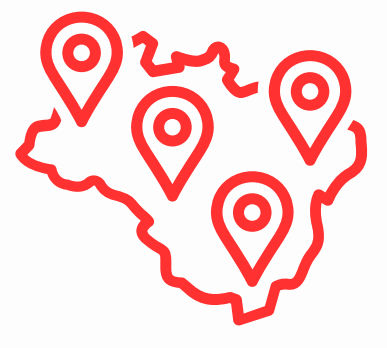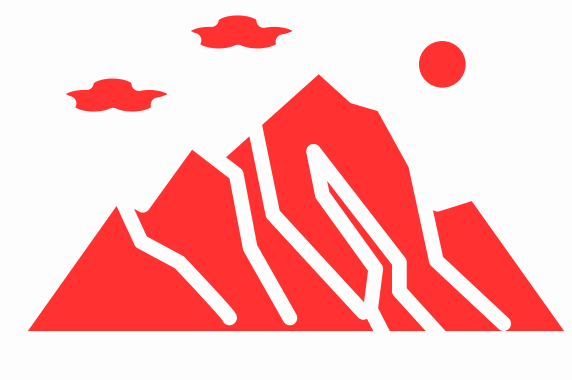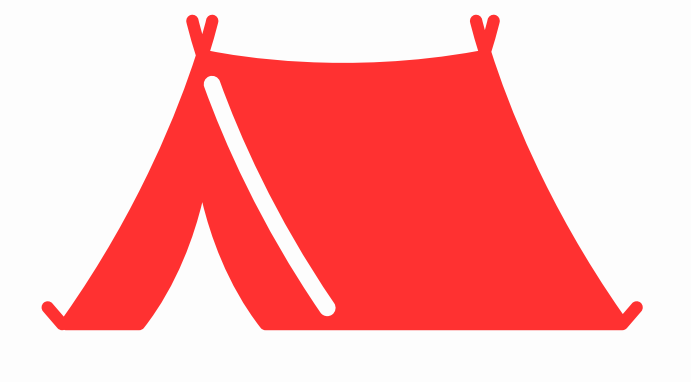Kashmir Gate Trek
book your tour via whatsapp

Region
Himanchal Pradesh

Duration
5 Days

Altitude
14,000 Ft.

Base Camp
Manali

Best Time to Visit
June To Sep
Kashmir Great Lakes Trek – Complete Overview
Region: Kashmir, J&K
Trek Duration: 7 days (Srinagar to Srinagar)
Trek Distance: ~75–80 km
Altitude Range: 2,700 m (Sonamarg) to 4,200 m (highest pass)
Grade: Moderate to Difficult
Best Time: July to September
Base Camp: Sonamarg
Starting Point: Shitkadi Village (Near Sonamarg)
Ending Point: Naranag
What is the Great Lakes Trek in Kashmir?
One of India’s most picturesque and fruitful alpine treks is the Kashmir Great Lakes Trek (KGL). Nestled in the heart of Kashmir’s Himalayas, this trail winds through verdant meadows, towering mountain passes, and a series of immaculate glacial lakes, each with its own unique personality and history.
The Kashmir Great Lakes route offers you seven high-altitude alpine lakes in seven days, which is unmatched by any other trek in the nation. The rewards for every step you take are breathtaking.
Why Trek the Great Lakes in Kashmir?
1. A Single Trek to Seven Alpine Lakes
You will encounter glacial lakes that are glistening, such as:
Lake Vishansar
Lake Kishansar
Lake Gadsar
Lake Satsar
Lake Gangbal
Lake Nundkol
Yamsar Lake (not required)
Like a massive natural mirror, each lake reflects the nearby peaks. Some are tucked away beneath rocky ridgelines, while others feature meadows as their foreground.
3. Cultural and Offbeat Side of Kashmir
While Srinagar and Gulmarg are tourist-heavy, this trek takes you far away from the crowds into remote villages, nomadic Gujjar huts, and places where there’s no network, no city lights—just pure wilderness.
Kashmir Great Lakes Trek Itinerary (7 Days)
🟩 Day 1: Drive from Srinagar to Sonamarg (Shitkadi Village)
Day 2: Shitkadi to Nichnai via Shekdur
Day 3: Nichnai to Vishansar Lake via Nichnai Pass
Day 4: Acclimatization / Exploration Day at Vishansar-Kishansar
Day 5: Vishansar to Gadsar via Gadsar Pass
Day 6: Gadsar to Satsar
Day 7: Satsar to Gangbal-Twin Lakes via Zaj Pass
🟩 Day 8: Gangbal to Naranag – Drive to Srinagar
| Location | Altitude (meters) |
|---|---|
| Shitkadi (Start) | ~2,700 m |
| Nichnai Pass | ~4,100 m |
| Vishansar Lake | ~3,710 m |
| Gadsar Pass | ~4,200 m |
| Gangbal Lake | ~3,580 m |
| Naranag (End) | ~2,200 m |
Kashmir Great Lakes Trek Itinerary (7 Days)
🟩 Day 1: Drive from Srinagar to Sonamarg (Shitkadi Village)
Drive: 3–4 hours, 80 km
Altitude: ~2,700 m
Stay: Camp at Shitkadi
Start from Srinagar and drive through beautiful countryside to reach Shitkadi, the base camp near Sonamarg. It’s a relaxed day for acclimatization.
🟩 Day 2: Shitkadi to Nichnai via Shekdur
Distance: ~11 km | Duration: 6–7 hrs
Altitude: 2,700 m to 3,500 m
The trail begins with a gradual ascent through dense forests and meadows until you reach Shekdur, then opens into highlands leading to Nichnai.
🟩 Day 3: Nichnai to Vishansar Lake via Nichnai Pass
Distance: ~12 km | Duration: 6–7 hrs
Altitude: 3,500 m to 3,710 m (Vishansar Lake)
Highest Point: Nichnai Pass (~4,100 m)
Crossing Nichnai Pass, you enter a stunning valley with Vishansar Lake waiting at the end—one of the most beautiful campsites.
🟩 Day 4: Acclimatization / Exploration Day at Vishansar-Kishansar
Altitude: 3,710 m
Use this day to explore Kishansar Lake nearby or simply rest and let your body acclimatize. You’ll need energy for the upcoming Gadsar Pass.
🟩 Day 5: Vishansar to Gadsar via Gadsar Pass
Distance: ~13 km | Duration: 7–8 hrs
Altitude: 3,710 m to 3,650 m
Highest Point: Gadsar Pass (~4,200 m)
This is the toughest day of the trek. A long climb to Gadsar Pass followed by a steep descent to the surreal Gadsar Lake.
🟩 Day 6: Gadsar to Satsar
Distance: ~12 km | Duration: 6–7 hrs
Altitude: ~3,600 m
Trek through meadows, boulder sections, and small streams. Reach Satsar Lake—a group of seven connected lakes. Camp nearby.
🟩 Day 7: Satsar to Gangbal-Twin Lakes via Zaj Pass
Distance: ~11 km | Duration: 6–7 hrs
Altitude: ~3,600 m to ~3,580 m
Another scenic day with a moderate pass. From the top of Zaj Pass (~4,100 m), you’ll get a grand view of Gangbal and Nundkol Lakes—the grandest twin lakes of Kashmir.
🟩 Day 8: Gangbal to Naranag – Drive to Srinagar
Distance: ~13 km trek | 4–5 hrs trek + 3-hr drive
Descent through pine forests to Naranag (2,200 m)
Drive back to Srinagar
A steep descent brings you to Naranag village where your trek officially ends. Vehicles will drive you back to Srinagar by evening.
How to Reach the Kashmir Great Lake Trek?
By Air: This is the most convenient way to reach Srinagar. There are several flights that go from New Delhi and land you in Srinagar.
By Bus: One can also reach Srinagar by bus. You can reach Srinagar from Jammu by buses that are provided by the J&K state road transport.
By Train: The nearest railway station to Srinagar is Jammu. One can reach Jammu Railway Station from several cities in India.
PS: Srinagar, the capital of Jammu and Kashmir, is well connected by air, road, and rail. Above are some different modes of transportation one can consider
Inclusions and Exclusions (If Booking with a Trek Operator)
Typically Included:
Transport from Srinagar to base camp and return
Tents, sleeping bags, and kitchen equipment
All meals during trek
Guides and support staff
Permits and first aid
Typically Excluded:
Offloading of backpack
Personal gear (trekking shoes, clothing, etc.)
Travel insurance
Accommodation in Srinagar (before/after trek)
What is the best time to go for the Kashmir Great Lake Trek?
The best time to go for this trek is between the months of July to September. The climatic conditions here are moderate, and one can explore the best of natural surroundings without any hassles.
How do I get to Kashmir for the Great Lake Trek?
One can get to Kashmir through rail services, proper airports, and also well-connected roads.
What kind of clothing equipment should I carry?
The clothing essentials include warm clothing, hiking boots, a waterproof jacket, a hat, gloves, and sunglasses.
What is the difficulty level of the Kashmir Great Lakes trek?
The difficulty level is moderate, and people who are very enthusiastic can actually try this trip to get great satisfaction in life.
How can I prepare myself for the trek?
The difficulty level of this trek is moderate, so for those who have a 9 5 desk job, it is crucial to undergo some physical training to prepare for the trek. The training should focus on endurance and strength workouts to make your body accustomed to this journey.
Which type of shoes will be required for the trek?
One should wear good-quality trekking shoes that cover your ankles. Don’t wear sports shoes as the trails are uneven and tricky. If you are buying new shoes for your trek, please wear them at least a month before you start your holiday.
Q: Is the Kashmir Great Lakes Trek safe?
Yes, it is safe when done with a registered guide/trek company. The Army often checks permits. Political situations rarely affect remote areas, but always check the latest news.
Q: Do I need a permit?
Yes. You’ll need permits from the Jammu & Kashmir Forest Department, usually arranged by your trek operator.
Q: Is this trek for beginners?
Not recommended for total beginners. It’s best for those who have done at least one multi-day Himalayan trek before.
Trek Difficulty and Fitness
Difficulty: Moderate to Difficult
You’ll need:
Good cardio fitness (able to walk 8–10 km/day at altitude)
Mental stamina for 7 days of camping
No fear of long climbs or descents
Not ideal for first-time trekkers, unless you’re physically active and well-prepared.
Best Time to Do the Trek
🌿 July to Early September
Snow melts by July, making the lakes accessible
Wildflowers bloom in the meadows
Skies are mostly clear, views are incredible
Post-September: Weather turns cold, chances of snowfall
Mobile Network & Facilities
No mobile network after Sonamarg
No electricity or charging
Satellite phone may be available with trek leader
Completely off-grid: expect no connectivity
What Makes Kashmir Great Lakes Trek Unique?
Seven different lakes in one itinerary (very rare)
Diverse landscapes: forests, alpine meadows, rocky sections
Panoramic mountain views
Untouched routes: fewer crowds than Himachal or Uttarakhand
Nomadic life glimpses: meet Gujjars and Bakarwals along the way
Quick Enquiry
INR 15,000 + 5% GST
Ex: Shrinager To Shrinager
Payment Mode: Cash, UPI, Bank Transfer
Trek Info
- Region : Kashmir
- Trek Distance: 72 Kms
- Duration: 7N/8D
- Altitude: 13,750 Ft
- Best Time To Visit: Sept
- Trek Grade: Easy To Moderate
- Pickup Point: Shrinager
- Drop Point: Shrinager
- Snow: Dec To Feb
Need Help?
Call To Expert:
